By Jasmina Susak • Updated on April 17, 2025 • Includes downloadable Skin Tone Viewer
Working with colored pencils can be challenging, especially for beginners who draw from a reference image and wonder how to choose colored pencils for drawing. Matching tones to a reference photo is key to achieving accurate sketches and realistic shading.
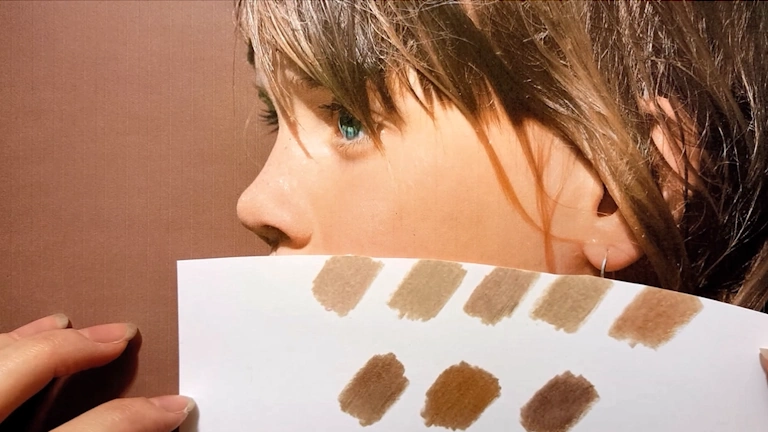
Easiest Way to Find the Best Colors to Match a Reference Photo
In this blog, I’ll guide you through choosing the best colored pencils for realistic art. Learn how I and other professional artists select colors to create lifelike tones that match reference photos. Read this free tutorial for tips on achieving realistic results.
Method 1 – Using a Color Picker for Accurate Color Matching
One of the most efficient methods I’ve found for how to choose colored pencils for drawing is using tools like PenPick.
The easiest way is to use PenPick – Color Picker for Artists, a game-changing web application that helps you select the right colored pencils simply by picking a color from your reference photo.
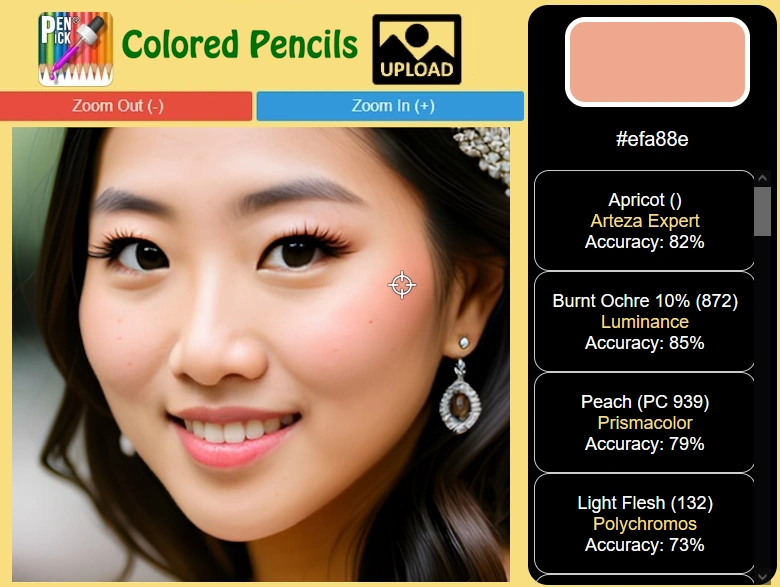
As a PenPick member, you can upload your own reference photo and simply click or tap on any part of the image you want to draw. The tool will instantly suggest the best colored pencils from 28 different brands on the right side.
Supported Colored Pencil Brands:
Not sure which colored pencil brand to buy? Check out my blog Top 3 Best Colored Pencils for Artists in 2025 — based on real experience.
How to Pick Colors with PenPick
Step 1: How to Upload Your Reference Photo
As a member, uploading your own reference photo is easy! Simply tap or click on the UPLOAD icon, then select the photo from your device’s gallery.
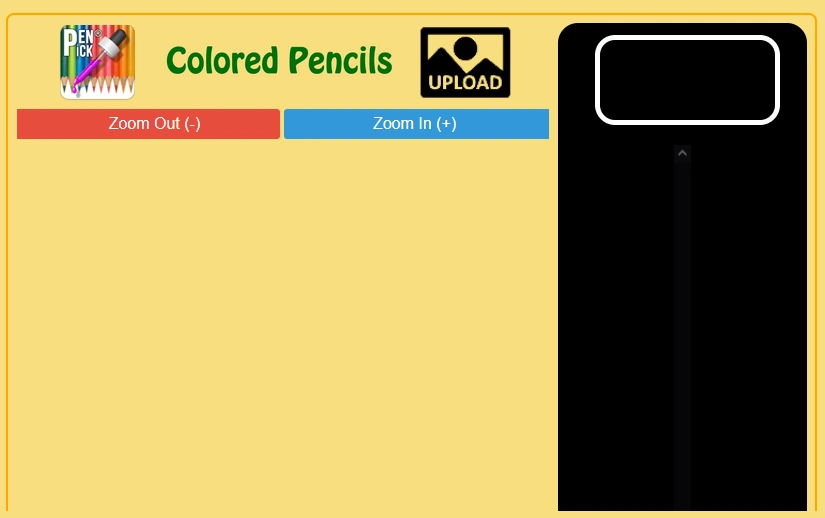
I have chosen this reference photo of a bald eagle, which is in the public domain and sourced from Pixabay, so we can use it without any copyright issues.

When you upload your image, you can zoom in to the finest details or zoom out and move the image within the panel.
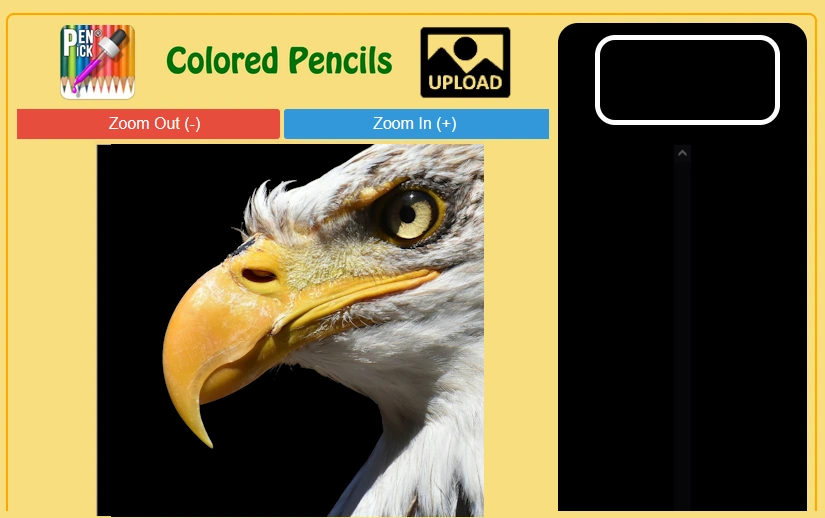
Step 2: How to Get Recommended Colored Pencils
Simply click or tap on the area you want to draw, and the suggested colored pencils will appear on the right side.
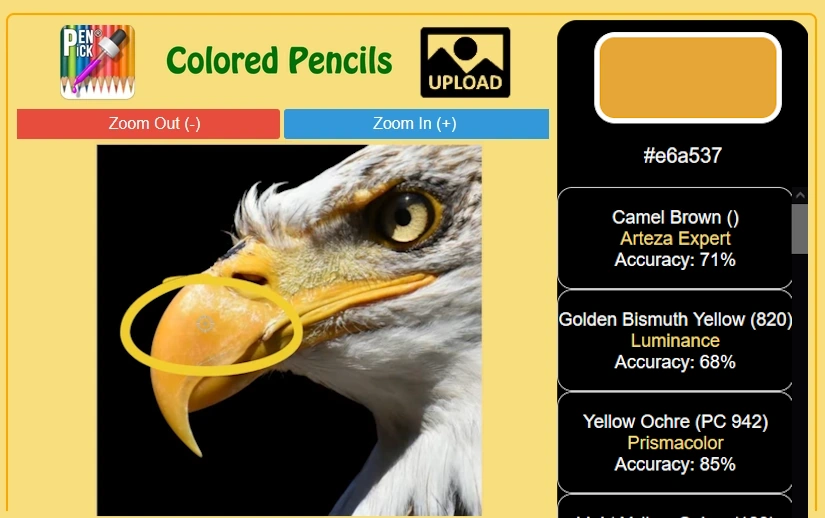
To find your preferred colored pencil brand, scroll up and down through the suggested pencils on the right.
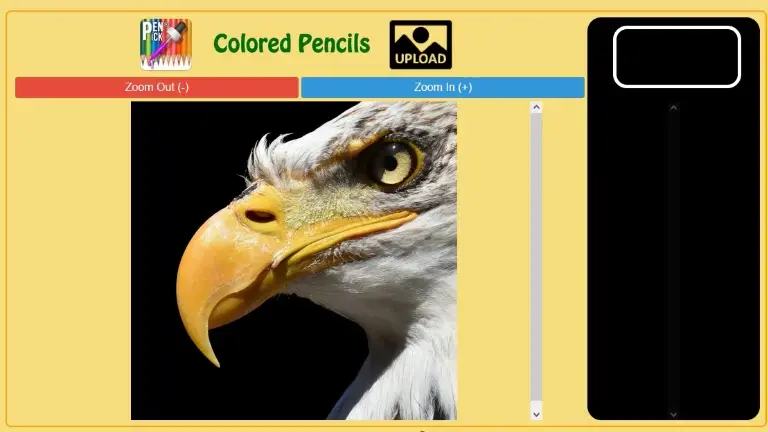
Step 3: Understanding the Accuracy Feature in Penpick
The Accuracy percentage shows how closely a suggested colored pencil matches the selected area.
- 90%+ Accuracy → Use that pencil confidently.
- 70% or lower → No exact match; mix colors. Tap nearby areas to find blending options.
- 50-60% Accuracy → Still the best available match but may not be ideal.
Pro Tip:
Always test colors on a separate sheet of paper before applying them to your drawings.
Step 4: Using the suggested colored pencil
I always use wax-based colored pencils like Prismacolor Premier and Caran d’Ache Luminance. Since I agree with the PenPick app’s recommendation, I use Yellow Ochre by Prismacolor for the selected area, which was suggested with 85% accuracy. In the image below, you can see me coloring the eagle’s beak with Yellow Ochre, demonstrating how the PenPick app helps me select the perfect colored pencils for my drawing.
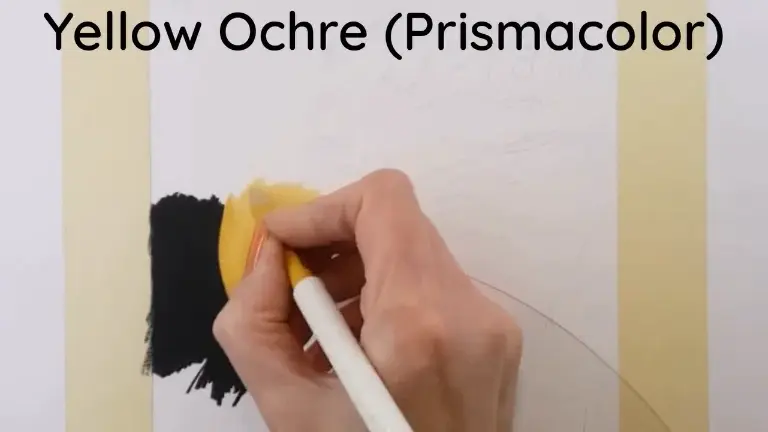
Next, we zoom in on the reference photo of the eagle in the PenPick app to enlarge the eyes. I then clicked on the iris to see which colored pencil the app would recommend. It suggested Cream by Prismacolor Premier with 78% accuracy, and I believe this is the best match for the most highlighted area of the iris.
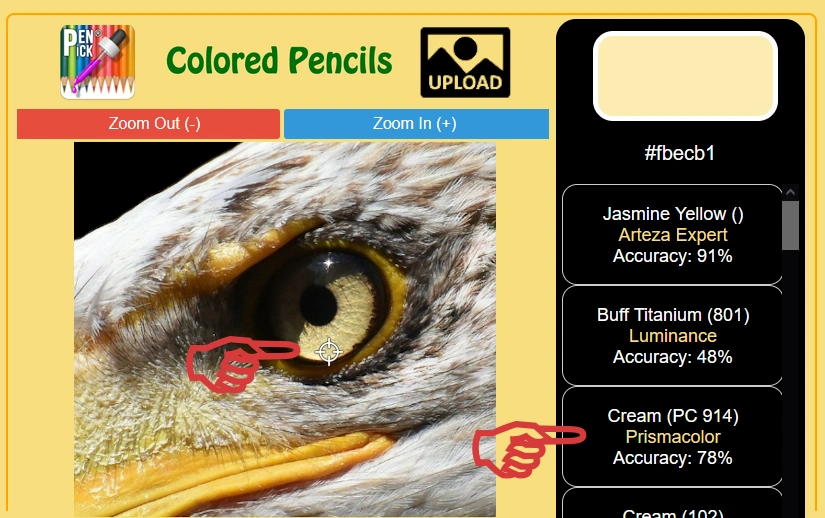
In the demonstration below, you can see me using Cream by Prismacolor Premier for the strikingly colored iris.
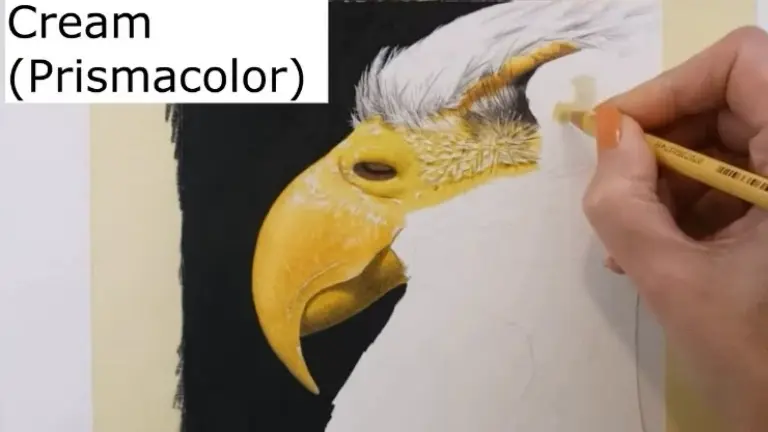
Let’s test this color picker further by picking colors for the eagle’s gape. As you can see, it suggests Jasmine by Prismacolor Premier with 85% accuracy.
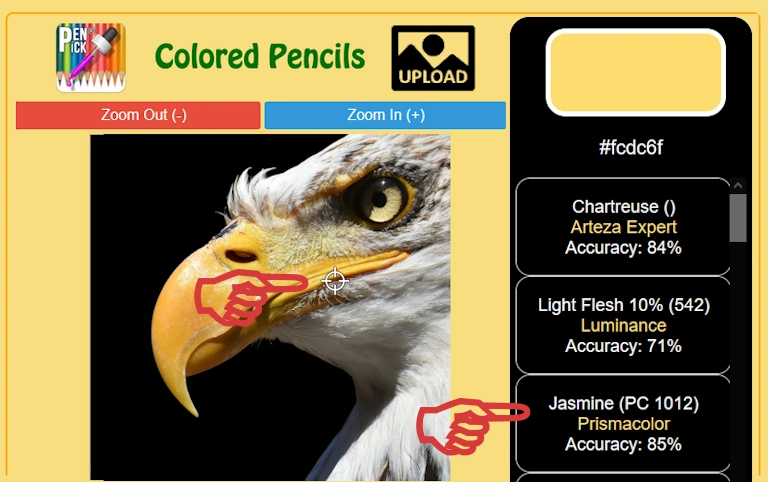
This recommended colored pencil, Jasmine by Prismacolor Premier, is perfect for the eagle’s gape. I pressed hard to create a smooth, even texture and a deep, rich color.
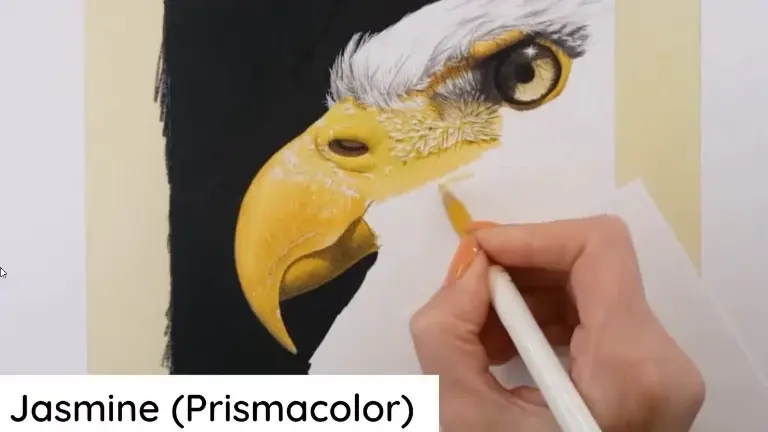
White feathers appear gray in shadow. I clicked on the shaded area shown below, and the color picker suggested Warm Gray 50% colored pencil by Prismacolor Premier with 79% accuracy.
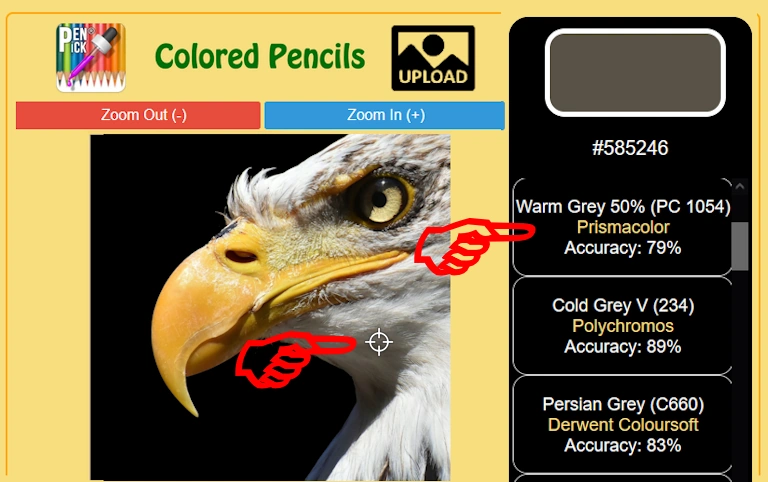
Of course, I can confirm that Warm Gray 50% colored pencil is the best match, so I used it to color this part. When I clicked around, PenPick recommended a darker Warm Gray for the shaded areas and lighter Warm Grays for the brighter sections, which I applied accordingly.
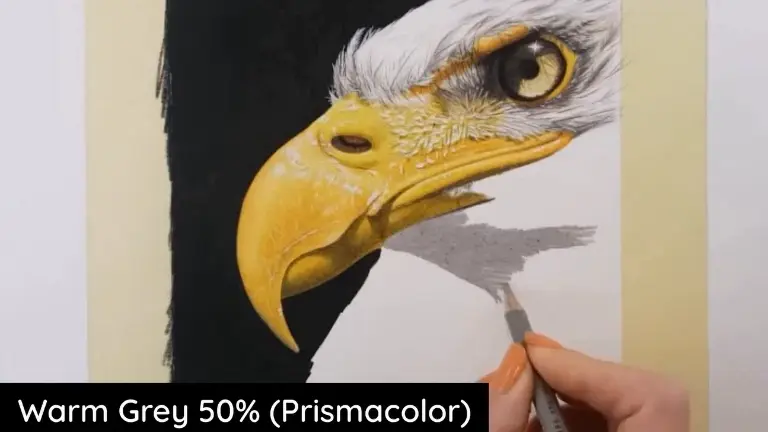
So, I used every pencil suggested by the color picker, and below you can see my finished drawing side by side with the reference photo. The colors match perfectly.
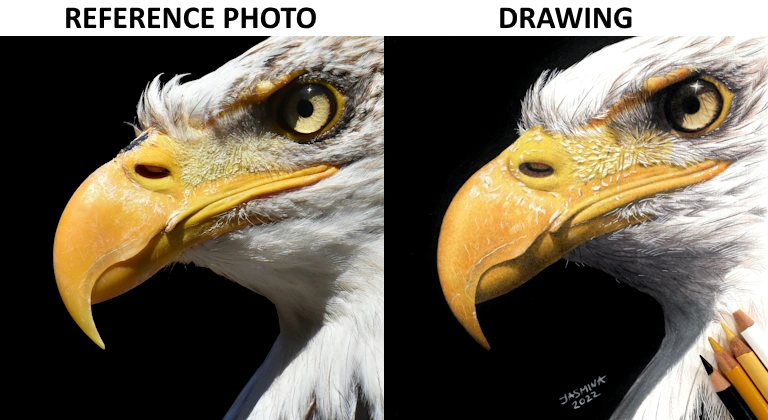
Coloring this bald eagle took me over 4 hours, and I’ve narrated the entire process. You can watch it, along with many other tutorials, on the Colored Pencil Tutor website.
How to Match Colored Pencils for Portraits
People often ask which colored pencils I use for skin tones, so here’s an example of how using a colored pencil picker can be beneficial. When I drew this portrait of The Rock, PenPick suggested Warm Grays for the shaved mustache area.
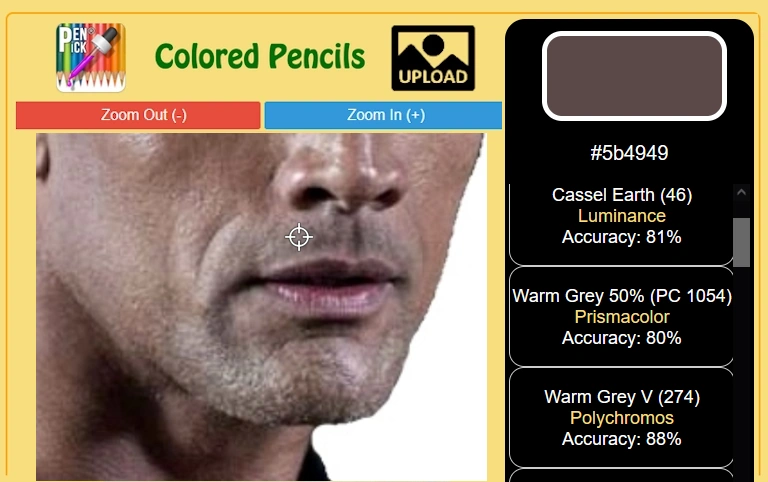
So, I used Warm Grays by Prismacolor Premier for the shaved mustache and beard areas, applying it over the basic colors I had already used. If you’d like to see which colored pencils I used as base colors for this portrait, join Colored Pencil Tutor to watch the full real-time video with written step-by-step instructions. I cover tutorials on skin tones, hair, and facial features there.
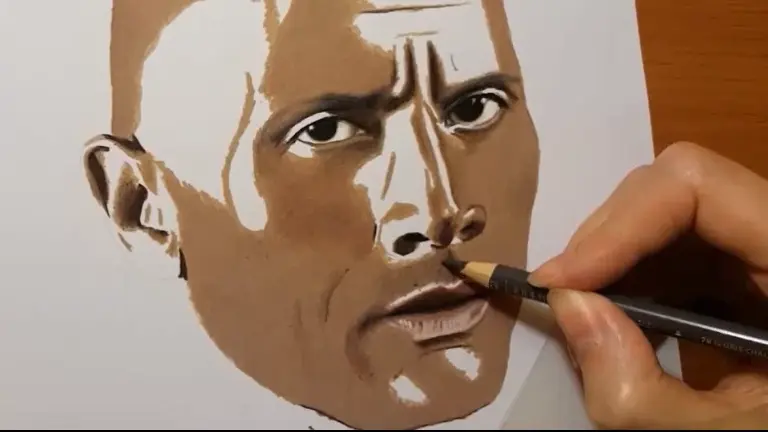
Read my blog How to Draw Portraits with Colored Pencils for practical tips, skin tone techniques, and a free step-by-step tutorial on drawing faces.
Even unusual colored pencils can enhance your portrait drawings. For instance, if a person wears a green t-shirt, the lower jaw area will reflect a subtle green hue. Simply add a layer of green over the skin to achieve a realistic effect, making your portrait more lifelike and true to the reference photo.
Watch the PenPick Colored Pencil demo below to see how it helped me find the best color matches for drawing this beautiful leopard.
Below is another PenPick Colored Pencil Picker demo, where I use the suggested pencils to draw a portrait of Rihanna. You can learn how to choose the right colored pencils for your drawings.
Fun fact: I once drew Jackson Galaxy and his late cat Velouria, who was with him until age 26. He saw my time-lapse video and even tweeted it! I later asked for his address and sent him the original drawing.
In the screenshot below, taken from one of his videos, you can see my artwork hanging on the wall behind him. Look how perfectly the skin tones in my drawing match his real skin color — spot on!
This is what happens when you use what PenPick tells you to 

Final Thoughts on Using PenPick for Choosing Colored Pencils
While PenPick suggests colored pencils, you are the one who decides whether the suggested pencil is the best choice for your drawing or if another option works better. Practice and experimentation will always be your best friends. However, integrating PenPick into your process will significantly improve your understanding of color mixing and how colors work together. It will also boost your confidence in choosing the right pencils for your drawing.
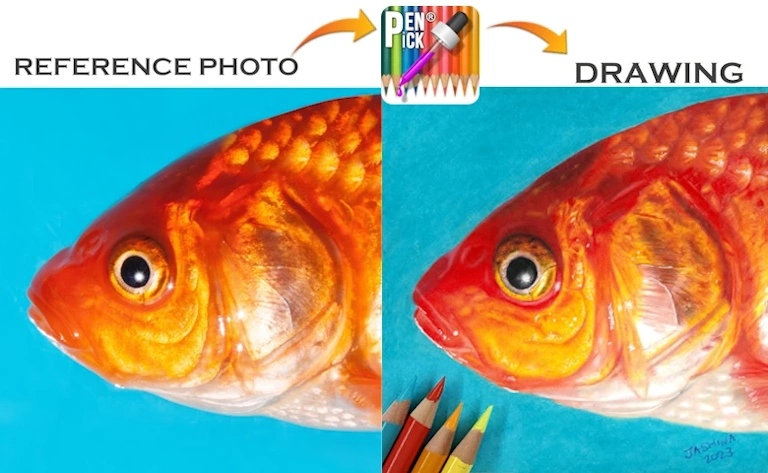
Besides colored pencils, PenPick also has separate apps for pastels, markers, and graphite, making it a versatile tool for all kinds of artists.
PenPick Colored Pencils subscription lets you upload your own photos 24/7 from any browser or device. It costs just $3 per week – less than a single Luminance pencil, so why not give it a try? No long-term commitment, cancel anytime. If it doesn’t help with your color selection, just ask for a refund.
So, using a color picker like PenPick can save time and improve accuracy. But what if you prefer a hands-on approach? Let’s explore other ways to choose colored pencils for drawing
Method 2 – Creating and Using Colored Pencil Swatches
Whatever colored pencil brand you’re using, it’s a really good idea to swatch out every single color on the same piece of drawing paper you use for your art and write the name of the pencil under each swatch. The exterior of the colored pencil doesn’t always match how it looks when applied to paper. Especially if you draw on toned paper, make sure to create separate swatches on that surface.
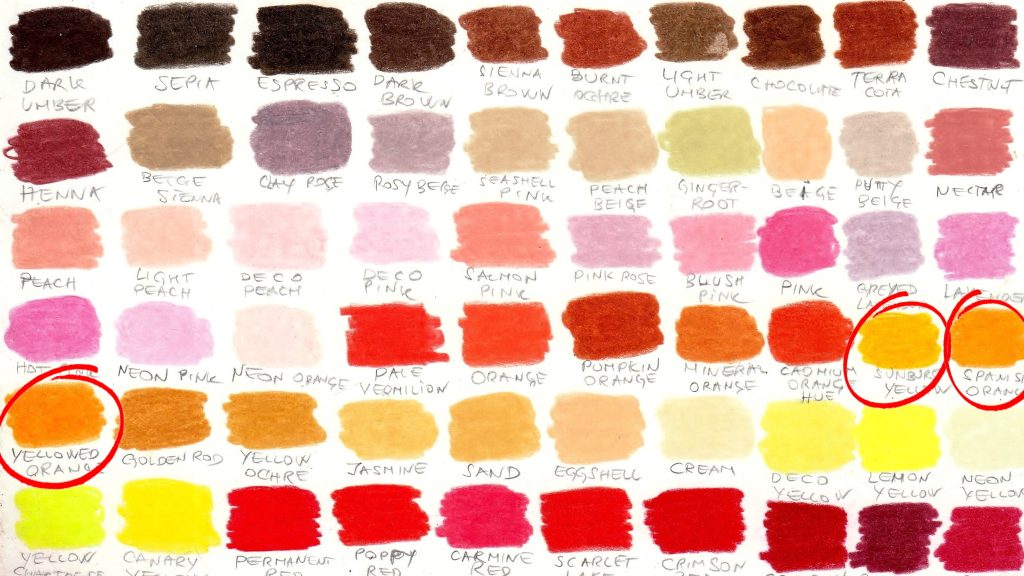
There are different techniques for mixing colored pencils. Some artists apply light pressure and create multiple layers, over and over again. I apply heavy pressure with my colored pencil, always starting with the basic color for the skin tone in my drawing. Then, I apply other colored pencils on top, also pressing hard. This is called the burnishing technique. I also establish the basic color and then add shadows with a darker pencil, and highlights typically with white. Explore the blogs on the homepage to learn more about my drawing technique.
How to Mix Colors and Create Swatches for Drawing Skin
The most important thing to know when mixing colored pencils is that the first layer will dominate and affect the overlapping layers of colors.
In the next image, you can see how skin tones are created by layering Prismacolor pencils one over another. Since skin is so nuanced and there are thousands of possible combinations, you’ll need to experiment to find what works best for you.
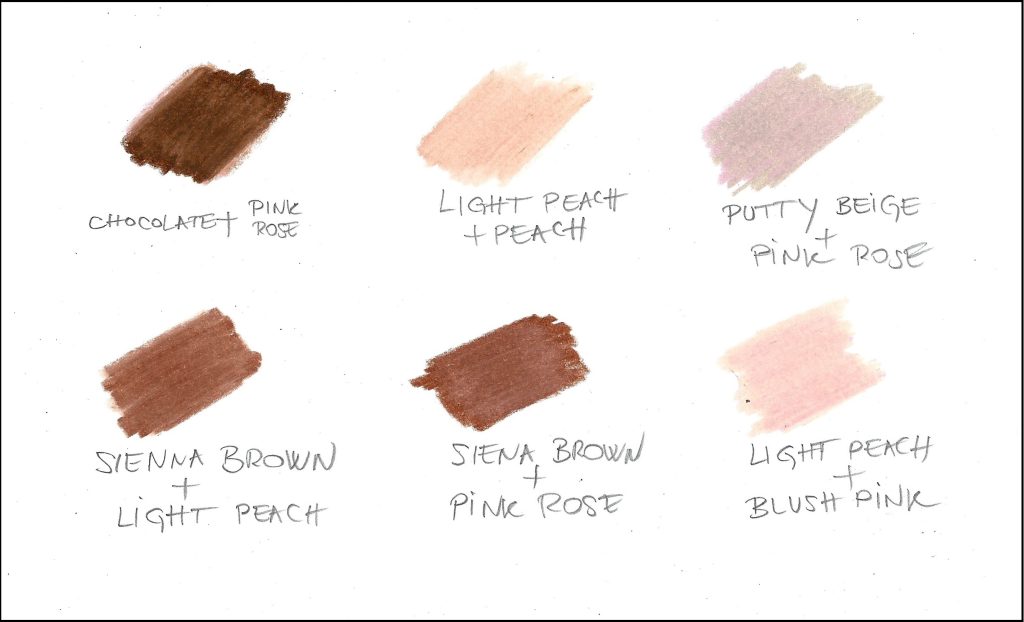
So again, the order in which you apply colored pencils is important. I’ve created two Skin Tone Value Viewers with Prismacolor Premier and Caran d’Ache Luminance 6901 shown below, featuring some color combinations I use for portraits.
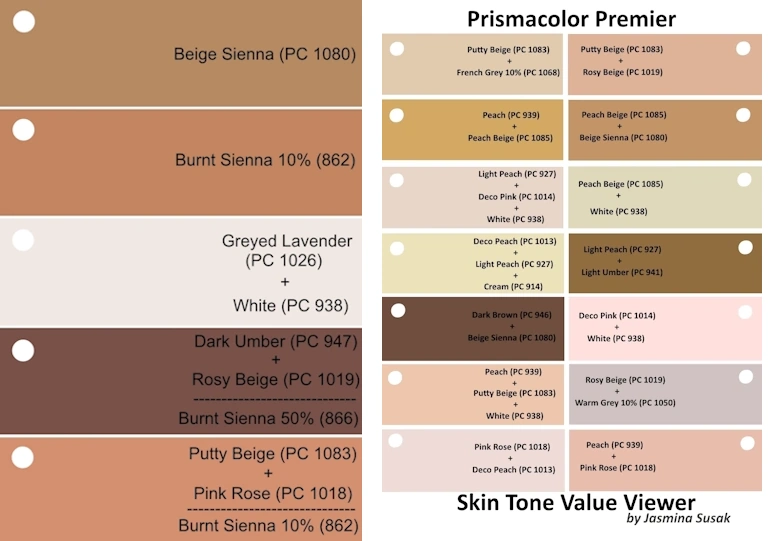
Simply download the viewer, cut out the hole, and place it over the printed reference photo. This way, you can compare the color seen through the hole with your colored pencil combination to check for a match.
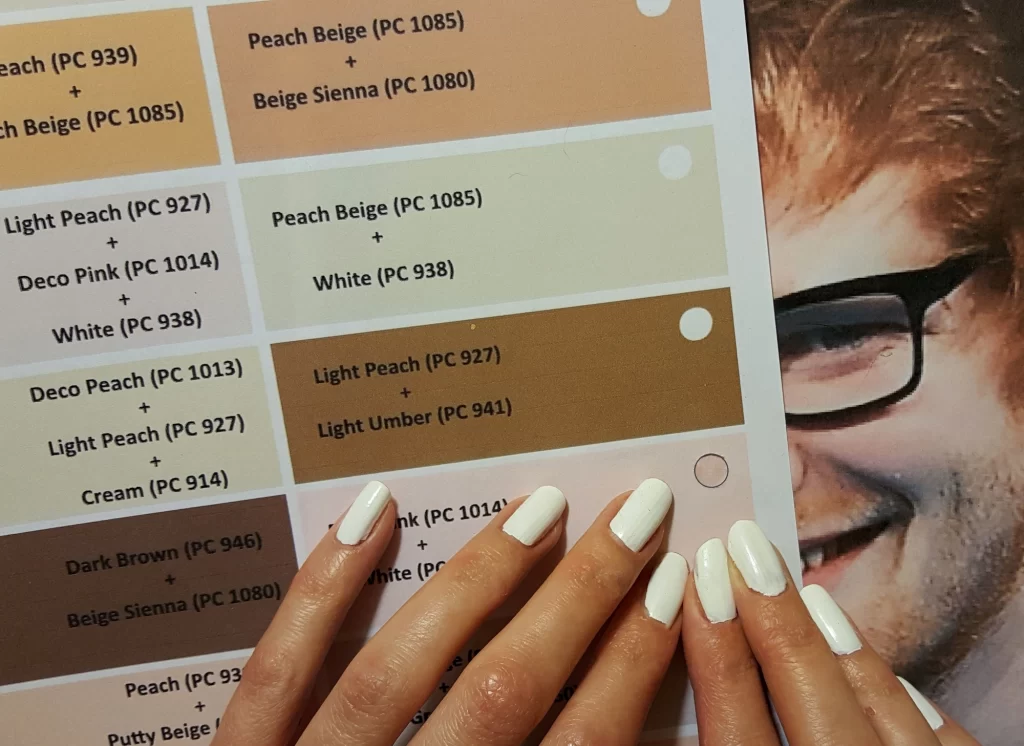
Watch my time-lapse drawing of Ed Sheeran below, where I used colored pencil combinations from the Skin Tone Value Viewer to build realistic skin tones.
Frequently Asked Questions:
One of the easiest ways is to use a tool like PenPick, which lets you upload a reference photo and tap on areas to get matching pencil suggestions. You can also create swatches and compare them manually to the printed photo.
Use your judgment. PenPick suggestions are helpful, but they’re not always perfect. If a suggested color looks off, try adjusting your reference image or choose a similar pencil that looks better on your paper.
PenPick is a color picker app for artists that suggests matching colored pencils based on your reference photo. It helps simplify the color selection process and improves color accuracy in your drawings.
Yes, PenPick supports 28 popular brands, including Prismacolor, Polychromos, Luminance, and more. You can choose your brand from the app settings.
Start by considering the subject and the type of paper you’re using. For portraits, soft wax-based pencils like Prismacolor work well for smooth blending. Always swatch your pencils to see how the colors behave on your actual drawing surface.
Yes, the first layer often influences the final result. In colored pencil techniques like burnishing, the base layer sets the tone and affects how the overlapping colors blend.
Yes, there are some free color picker apps available, but they usually come with limitations. Most have a limited selection of colored pencil brands, no accuracy percentage, and are often loaded with ads.
PenPick costs only $3 per week—less than the price of three Prismacolor Premier pencils—and offers clean, ad-free use with accuracy features. You can also save by choosing the yearly plan, which is just $19.
Absolutely! You can upload your work-in-progress drawings for feedback, ask questions, and even chat with other members of the community. Support is always available when you need it. Also, we have added PenPick exclusively for Colored Pencil Tutor members featuring Prismacolor, Polychromos, and Luminance where you can upload your images and get help in how to choose the right colored pencils for your drawings.
PenPick is helpful for all skill levels. Beginners love how it simplifies color selection, while experienced artists use it to save time and discover new combinations. Whether you’re drawing portraits, animals, or detailed textures, PenPick can enhance your workflow and help you make smarter color choices.
If you liked this article, please rate it below, share it with others, and subscribe for free to the newsletter at the bottom of the site to stay updated on new blog posts.
Leave a comment below to share your drawing journey, ask a question, upload your images, or suggest a topic you’d like me to write about.

This is a very useful article with great tips for colour pencil selection. I just tried out penpick to choose the colours for a botanical picture I am planning with using Caran’D’ache Luminence pencils. The colours are a good match. Also I like the section for selecting skin tones. I will give it a try for a portrait I am embarking on as well !
Thank you so much, Salma. Glad you like PenPick. Luminance is a great choice. Please attach your drawings here in the comment section, we’d love to see them